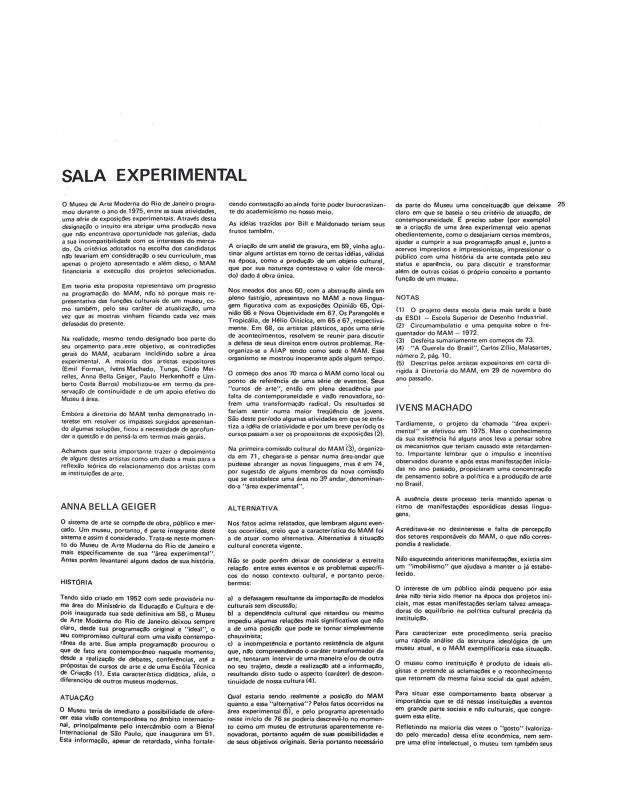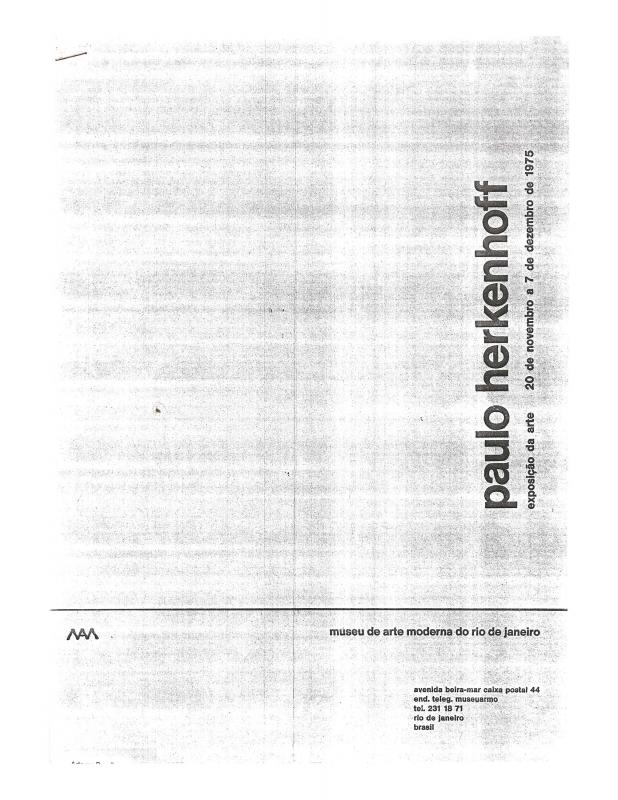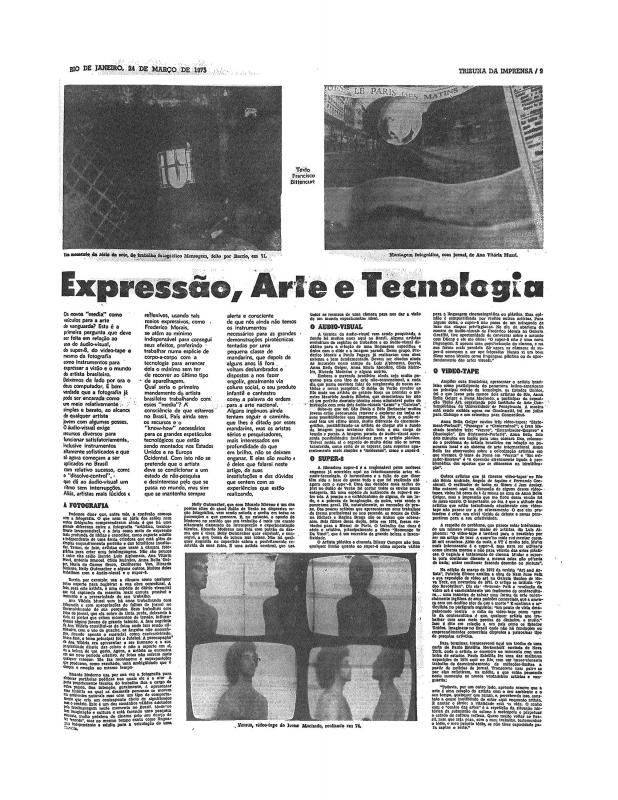This article references the exhibition Exposição de Arte, presented by Paulo Herkenhoff (b. 1949) at the Sala Experimental del MAM-Rio (Museu de Arte Moderna do Rio de Janeiro) from November 20 to December 7, 1975. The exhibition included several performance pieces (such as “Estômago Embrulhado” [Wrapped Stomach]), in which the artist digests pages from a newspaper that has been ‘processed’ by Antonio Manuel—the work “Pintor ensina Deus a pintar,” created by Manuel—and other works.
The article describes the new role of the museum as an experimental space and discusses some of the experiments that used new technical media to produce audiovisual images during the 1970s. Some of the artists mentioned in the article—Anna Bella Geiger, Ivens Machado, and Paulo Herkenhoff—researched the institutional policies of the recently opened Sala Experimental at the MAM-Rio (Museu de Arte Moderna do Rio de Janeiro) in a jointly written article [see ICAA digital archive, doc. no. 1110602]. See also an essay by Fernando Cocchiarale about Geiger, “O pão nosso de cada dia,” in which the critic discusses his exhibition at the Sala Experimental del MAM-Rio (doc. no. 1110557).
Herkenhoff is now known in international circles as an art critic and a curator; he was also responsible for the 1998 Bienal de São Paulo. He began his career in 1975 at the Sala Experimental del Museu de Arte Moderna do Rio de Janeiro, where some of the finest art in the city was exhibited. His exhibition, Exposição de Arte, was presented at the Sala Experimental del MAM-Río in 1975, where he introduced certain developments in performance art [see ICAA digital archive, “Exposição de arte” doc. no. 1110618].
Francisco Bittencourt was a particularly thoughtful and active critic in the Rio de Janeiro art scene in the late 1960s and early 1970s. This article can be viewed as a secondary source; it is of interest because it reactivated the critical debate that raged during that decisive time about the relationship between art and technology; see “Expressão, arte e tecnología” (doc. no. 1110492). This is a subject that is now of fundamental importance for those who seek a broader understanding of the recent history of Brazilian art.




